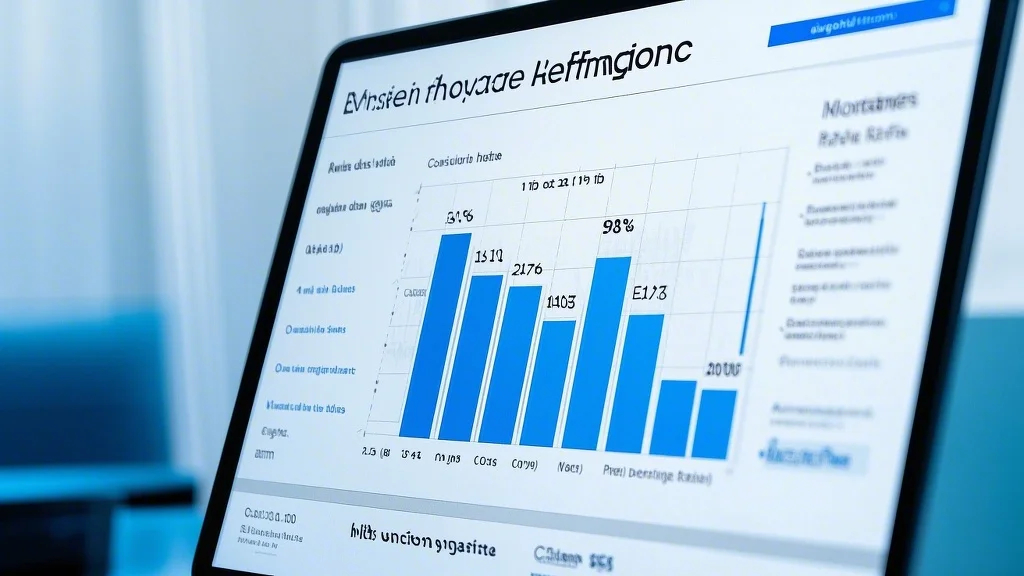Are you considering refinancing your mortgage? Understanding how to compare mortgage refinance rates can save you thousands of dollars in interest over the life of your loan. In this comprehensive guide, we’ll walk you through the process of comparing mortgage refinance rates, helping you make an informed decision that suits your financial goals. Whether you’re a first-time refinancer or looking to secure a better rate, this article is your ultimate resource.

Understanding Mortgage Refinance and Why Comparing Rates Matters
When it comes to homeownership, few decisions have as significant an impact as choosing the right mortgage rate. Over the life of a loan, even a small difference in interest rates can add up to thousands of dollars in savings—or extra costs if you’re not careful. This is where understanding how to compare mortgage refinance rates becomes crucial.
What is Mortgage Refinance?
Mortgage refinancing is the process of replacing your current mortgage with a new one, often to secure a lower interest rate, reduce monthly payments, or access cash from your home’s equity. It’s a common strategy for homeowners looking to save money or improve their financial situation. However, like any major financial decision, it’s important to approach it with care and thorough research.
Why Compare Mortgage Refinance Rates?
Comparing mortgage refinance rates is essential because not all lenders offer the same terms. Even a slight variation in interest rates can affect your monthly payments and the total cost of the loan. Here are some key reasons to shop around:
Lower Interest Rates: A lower interest rate can significantly reduce your monthly payments and the overall amount you pay over the life of the loan.
Lower Monthly Payments: If you’re struggling with your current mortgage payments, refinancing could offer relief.
Accessing Cash: If you’re refinancing to access cash, a higher interest rate might offset the benefits, so it’s important to weigh the costs.
Step 1: Understand Your Current Mortgage Situation
Before you start comparing mortgage refinance rates, take a clear picture of your current mortgage. Ask yourself:
What is your current interest rate?
How much time do you have left on your current loan?
Are there any penalties for refinancing?
This information will help you determine whether refinancing is worth the effort and cost. For example, if you’re near the end of your mortgage term, the savings from refinancing may be minimal.
Step 2: Check Your Credit Score
Your credit score plays a pivotal role in determining the mortgage rates you qualify for. Lenders use your credit score to assess your creditworthiness, and a higher score typically means better rates. Aim to check your credit score before you start shopping around. If your score isn’t where you want it to be, consider taking steps to improve it, such as paying down debt or making consistent on-time payments.
Step 3: Determine Your Financial Goals
What do you hope to achieve with your mortgage refinancing? Here are some common reasons people refinance:
Reduce Monthly Payments: If interest rates have dropped since you took out your original mortgage, refinancing could lower your payments.
Lock in a Fixed Rate: If you have an adjustable-rate mortgage (ARM), refinancing to a fixed-rate mortgage can provide stability.
Access Cash: refinancing can allow you to borrow against your home’s equity for various purposes, such as home improvements or debt consolidation.
Understanding your goals will help you focus on the right refinancing options and compare rates more effectively.
Step 4: Shop Around for Lenders
It’s no secret that different lenders offer different rates. To get the best deal, you need to shop around and compare multiple lenders. Start by reaching out to banks, credit unions, and online lenders. Many lenders offer online tools or calculators to help you estimate your mortgage payments and rates.
When comparing lenders, keep an eye out for:
APR (Annual Percentage Rate): This is the interest rate you’ll pay on your mortgage, expressed as a yearly rate.
** Fees:** Lenders often charge origination fees, processing fees, and other costs. These can add up, so make sure to factor them in.
Loan Terms: Fixed-rate or adjustable-rate mortgages? Know the terms and how they align with your financial goals.
It’s also a good idea to work with a mortgage broker. A broker can shop around on your behalf and present you with multiple options, saving you time and effort.
Step 5: Get Pre-Qualified
Once you’ve narrowed down your options, it’s a good idea to get pre-qualified or pre-approved by a lender. This process involves providing detailed financial information, such as income, assets, and debts. The lender will use this information to give you a more accurate rate and payment estimate. Pre-qualification can also help you understand what rates you’re likely to qualify for, so you can comparison shop more effectively.
Comparing Mortgage Refinance Rates: A Deep Dive
Now that you’ve laid the groundwork, it’s time to dive deeper into comparing mortgage refinance rates. This part of the guide will focus on analyzing different lenders, understanding the key factors that influence rates, and making the best choice for your needs.
Understanding Mortgage Rate Quotes
When you receive a mortgage rate quote, it’s important to understand what you’re looking at. Most lenders will provide you with the APR, the fees associated with the loan, and the monthly payment amount. Let’s break these down:
APR (Annual Percentage Rate): This is the total cost of the loan expressed as an annual rate. Unlike the interest rate, the APR includes fees and other costs.
Fees: These can include origination fees, application fees, and closing costs. Be sure to ask about which fees are included in the APR and which aren’t.
Monthly Payment: This is the amount you’ll pay each month, including principal, interest, and sometimes taxes and insurance (if you’re opting for escrow).
When comparing quotes, focus on the combination of APR and fees, as these will have the greatest impact on your total cost.
Shop for the Best Mortgage Rate: A 5-Step Process
To ensure you’re getting the best possible rate, follow these steps:
Get Multiple Quotes: Request quotes from at least three to five lenders. This will give you a clearer picture of the market and the rates available to you.
Compare APRs: While the nominal interest rate is important, the APR is a more accurate reflection of the loan’s total cost.
Consider Loan Terms: If you’re considering an adjustable-rate mortgage (ARM), compare how the rates will adjust over time. Fixed-rate mortgages offer stability, while ARMs may offer lower initial rates but could increase over time.
Evaluate Closing Costs: Closing costs can vary significantly between lenders. Be sure to compare not just the interest rate but also the total closing costs.
Work with a Trusted Broker: A mortgage broker can help you compare rates and terms from multiple lenders, saving you time and effort.
Understanding the Role of Lender-Specific Factors
Not all lenders are created equal. Some may specialize in certain types of loans or offer unique programs tailored to specific borrowers. For example:
Banks and Credit Unions: These institutions often offer competitive rates and may provide additional benefits, such as discounted fees for members.
Online Lenders: Online lenders often offer a streamlined application process and may provide slightly better rates due to lower overhead costs.
Mortgage Brokers: Brokers work with multiple lenders and can shop around to find the best rates and terms for your situation.
When comparing rates, it’s important to consider not just the numbers but also the reputation and reliability of the lender. Look for reviews and ratings to ensure you’re working with a trusted provider.
The Impact of Your Home’s Appraisal Value
Your home’s appraisal value is another critical factor in determining your mortgage rates. Lenders will appraise your home to assess its market value, and this valuation will influence how much you can borrow and at what rate. If your home’s value has appreciated since you took out your original mortgage, you may be able to access more equity and secure better rates.
Weighing the Benefits of Fixed-Rate vs. Adjustable-Rate Mortgages
When comparing mortgage refinance rates, it’s important to consider the type of mortgage you’re selecting. Here’s a breakdown of the pros and cons of fixed-rate and adjustable-rate mortgages:
Fixed-Rate Mortgages:
Pros: Predictable payments, stable rates, and the ability to budget long-term.
Cons: Higher initial rates compared to ARMs.
Adjustable-Rate Mortgages (ARMs):
Pros: Lower initial rates and the potential for lower rates over time.
Cons: Rates can increase over time, leading to higher payments.
If you plan to stay in your home for the long term, a fixed-rate mortgage may be the better option. If you’re planning to sell your home in the near future, an ARM might offer lower initial payments.
The Role of Market Conditions
The broader market can also influence mortgage rates. For example:
Economic Indicators: Inflation, employment rates, and other economic factors can impact mortgage rates.
Federal Reserve Policies: Changes in federal interest rates can influence the rates offered by lenders.
While market conditions are beyond your control, staying informed can help you make smarter decisions. If you’re comparing rates during a period of rising interest rates, for example, you may want to lock in a rate sooner rather than later.
Considering the Long-Term Benefits
While it’s important to focus on the immediate rates and terms, it’s equally crucial to think about the long-term benefits of refinancing. For example:
Lower Interest Rates: Even a small reduction in your interest rate can save you thousands of dollars over the life of your loan.
Improved Cash Flow: Lower monthly payments can free up cash for other financial priorities.
Enhanced Equity: If you’re refinancing to access cash, you can use the proceeds for home improvements or other investments.
However, refinancing also comes with costs, so it’s important to weigh these against the potential savings. A refinance calculator can help you estimate your break-even point—that is, the point at which your savings outweigh the costs of refinancing.
Final Thoughts: Making the Right Choice
Comparing mortgage refinance rates can be a daunting task, but it’s well worth the effort. By understanding your options, shopping around for the best rates, and considering your long-term goals, you can make a decision that saves you money and provides peace of mind.
Whether you’re looking to lower your monthly payments, secure a fixed rate, or access cash from your home’s equity, the key is to approach the process with patience and thoroughness. Take the time to research, compare, and consult with professionals to ensure you’re making the best choice for your financial future.
In the end, the right mortgage refinance rate is the one that aligns with your financial situation and goals. By following the steps in this guide, you’ll be well on your way to making a decision that benefits you for years to come.



